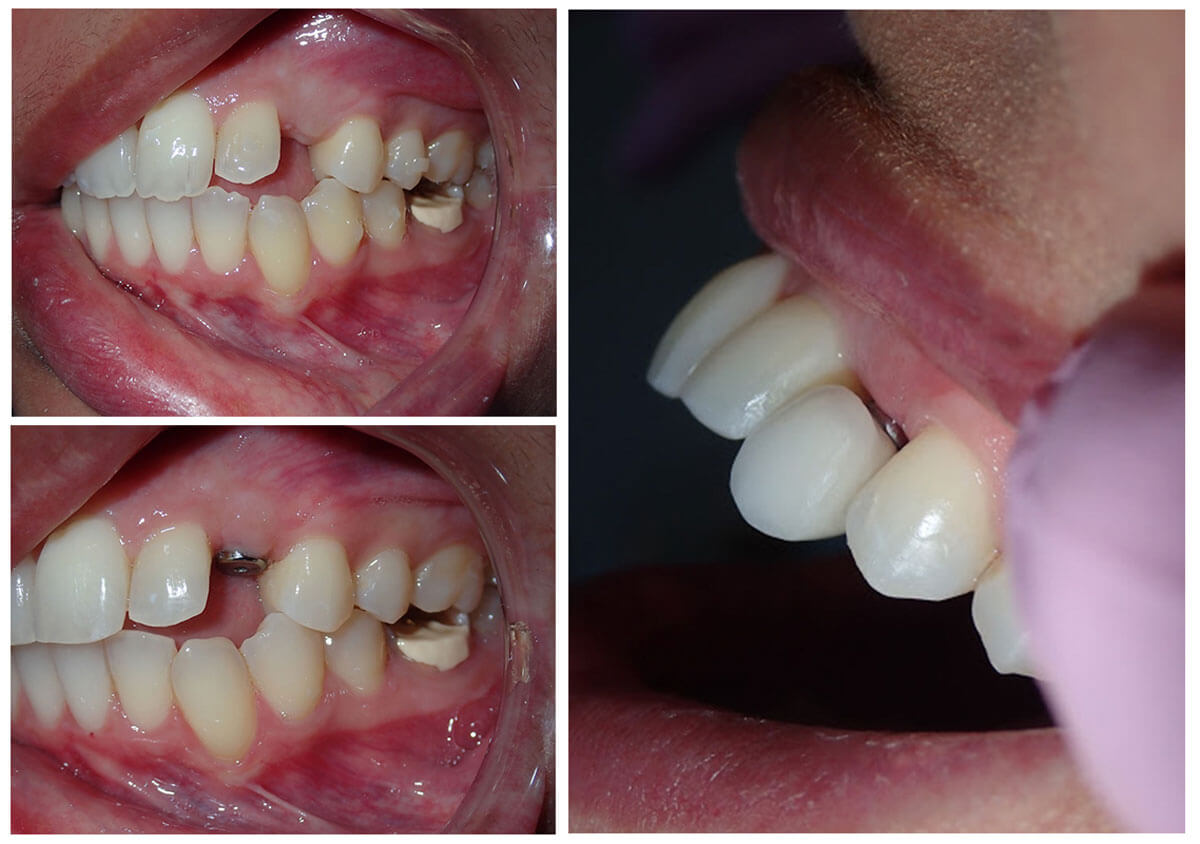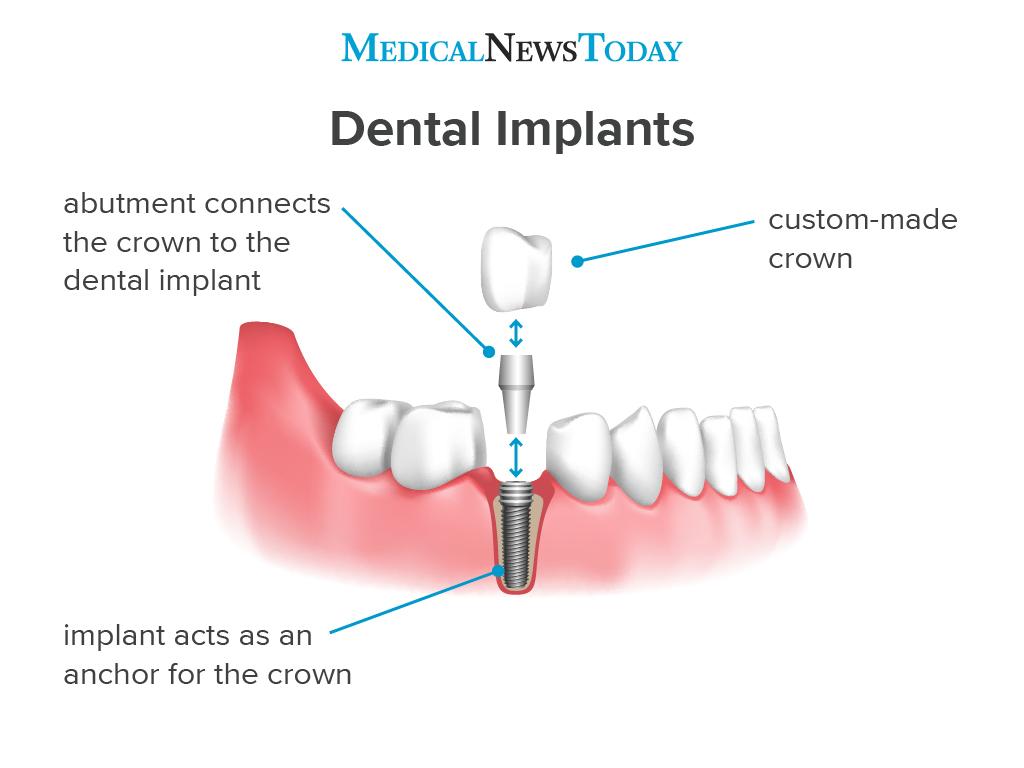The Best Strategy To Use For Dental Implants
The Best Strategy To Use For Dental Implants
Blog Article
The Of Dental Implants
Table of ContentsNot known Facts About Dental ImplantsDental Implants - QuestionsExcitement About Dental ImplantsSome Ideas on Dental Implants You Should Know
are clinical devices operatively implanted into the jaw to recover an individual's ability to chew or their look. They provide assistance for synthetic (fake) teeth, such as crowns, bridges, or dentures. When a tooth is lost because of injury or illness, a person can experience difficulties such as fast bone loss, defective speech, or changes to chewing patterns that lead to pain.
Structure of The Oral Implant System choosing oral implants, talk with your dental copyright regarding the potential advantages and threats, and whether you are a prospect for the procedure. Things to consider: Your overall wellness is an important consider figuring out whether you are an excellent candidate for oral implants, the length of time it will certainly take to heal, and how much time the dental implant may stay in location.
Cigarette smoking may influence the healing procedure and reduce the long-term success of the dental implant. The recovery procedure for the dental implant body may take numerous months or longer, throughout which time you usually have a short-lived abutment instead of the tooth. the dental implant procedure: Meticulously comply with the dental health directions offered to you by your oral provider.
Get This Report on Dental Implants
Implant failure can cause the need for one more operation to take care of or change the implant system. Brings back the capability to chew Brings back cosmetic appearance Helps keep the jawbone from shrinking because of bone loss Protects the health and wellness of the bordering bone and periodontals Assists maintain nearby (neighboring) teeth secure Boosts lifestyle Damage to surrounding natural teeth throughout dental implant placement Injury to the surrounding tissues throughout surgery, such as sinus opening Injury during surgery (for instance, crack of bordering jawbone) Poor feature, such as seeming like the teeth do not attack with each other generally A sensation that the tooth hangs or turning in position arising from a joint screw loosening up Implant body failing (looseness of the implant body) due to browse around here systemic infection, which might be more probable in clients with uncontrolled diabetes as a result of regional infection in bone and gums sustaining the dental implant body because of delayed recovery, which might be extra most likely in clients who smoke Trouble cleansing the gum tissues around the implant, resulting in inadequate oral health Without treatment periodontal condition Post-surgical tingling due to nerve impingement or damages Always notify healthcare carriers and imaging service technicians that you have oral implants before any kind of magnetic resonance imaging (MRI) or x-ray treatments.
FDA is not familiar with any type of adverse events reported for MRI or x-ray treatments with dental implants. Oral implants systems are typically made from products that follow worldwide agreement requirements of the International Company for Standardization (ISO) or ASTM International. These requirements have information of what makes a risk-free product.
Dental implant systems are evaluated according to international consensus standards. Biocompatibility screening, to reveal that bodily contact with the device does not create issues like inflammation or allergic response, is component of the examination that helps guarantee the products in the dental implant system are risk-free and do not cause adverse impacts when implanted in people.

Little Known Questions About Dental Implants.
Some people are not eligible for oral implant surgical procedure. It is for oral doctors to run on individuals with: intense illnessuncontrollable metabolic diseasebone or soft cells illness or infectionIf these issues are settled, an individual can have the surgery. Dental Implants. In, dental cosmetic surgeons avoid operating individuals with: If individuals with any of the above go through dental implant surgical procedure, there is a greater threat of the dental implant stopping working
Some Web Site people have a jawbone irregularity that prevents enough bone for an implant from creating. The doctor will certainly then utilize a bone or bone substitute to repair and build up the area.
Oral implant surgical procedure is an individualized procedure. It's not the same for everybody. The complying with gives a general overview of what you can expect your dental expert, oral surgeon, periodontist or prosthodontist to do: Position the that site dental implant operatively. Give you time to recover. Connect the blog post and last crown, bridge or denture.
Next, your surgeon will thoroughly position the dental implant into your jaw. Your cosmetic surgeon will rearrange your gum tissues and close the laceration with stitches (Dental Implants). If your dental implant is near the front of your mouth, your dentist will certainly make a temporary tooth for you to wear till you heal. In this way, you will not have a space in your smile while you recuperate.
What Does Dental Implants Do?
Your provider can tell you what to anticipate in your situation. During the healing stage, your jawbone must fuse to the dental implant. This process, called osseointegration, is vital for stability and long-lasting success. This procedure can take anywhere from 3 to 9 months. Sometimes, it may take much longer.
When your dental implant heals, your dental expert can affix the joint (tiny connector article) and your final restoration (crown, bridge or denture). This typically takes regarding one hour to finish and might require a second small surgery. You should not really feel any discomfort throughout your dental implant treatment since your service provider will certainly make use of medication to numb your periodontals.
Report this page